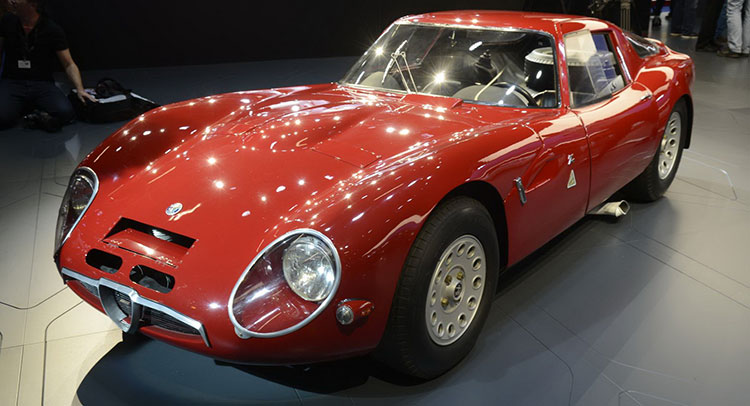The Frankfurt auto salon doesn’t only celebrate the future of motoring, but the past as well. Knowing this, Alfa Romeo brought two gorgeous, classic automobiles to delight the true gearhead in all of us.
To celebrate the Giulia name, badge and heritage, the Italian car manufacturer showcased two gorgeous automobiles from its glory days. Being a 105-year old car company has its perks, especially if we’re talking about a grand manufacturer such as Alfa Romeo, whose vast influence helped conceive some of the most desirable cars on the planet.
Take for instance the red Alfa Romeo Giulia TZ2 showcased at Frankfurt. Now, it wasn’t built by Alfa, but it shares many components with the Tipo 105 Giulia, including the 1570 cc straight-4 DOHC eninge. It was developed by Zagato together with Autodelta – a company led by ex-Ferrari engineer Carlo Chiti – and only 12 examples were ever built.
Unfortunately, the TZ2 never had a “stradale” variant, as it was built solely for racing. By that time, the standard Giulia engine was extensively modified by Autodelta, squeezing 174 horses at 7500 rpm thanks to a twin plug and a dry sump lubrication system; a modest power figure by today’s standards, but the TZ2 weighed only 620 kg (1,367 lbs), as the beautiful Zagato body was manufactured out of fiberglass. Needless to say, that was enough to make the car reach a top speed of 245 km/h (152 mph).
Of course, its rarity makes it an atypical sight, but Alfa showcased a more…earthly Giulia as well. The white little sedan is a 1964 Giulia T.I Super, internally known as a Tipo 105.16. The legendary “Quadrifoglio Verde” on its body confirms its sporty nature, as this particular variant was made for homologation purposes only.
It featured alloy wheels, disk brakes on all four wheels and the body was lightened, while a floor gear-change was fitted as standard. But the most important change was made under the wood, where the 1,570 cc inline four engine received two double-choke horizontal Weber 45DCOE carburetors, increasing its power to 110 horses from standard 91. It remains a rare and desirable car, as only 501 examples were constructed.























